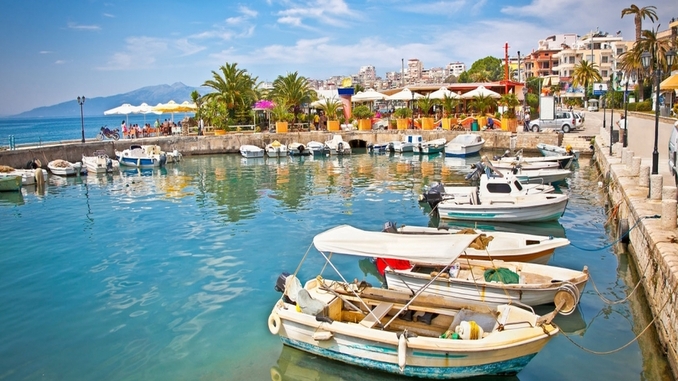
For decades Albania was a no-go area for tourists yet today is increasingly touted as a destination to watch.
Albania has only been open to visitors for two decades, and before that was reeling from the move from communism to capitalism, economic collapse, the disintegration of state institutions and serious social unrest. For more than 40 years it had been an authoritarian state shrouded in secrecy. However, in recent years the government has been strongly focusing upon reducing corruption, enforcing the rule of law and attracting investment.
Infrastructure is fast improving, notably the new Mother Teresa international airport opening in 2008 and massive programmes such as the linking of Kosovo and the south of the country with Tirana. A journey from Tirana to Sarandë, for example, has now been halved. The World Bank has to date provided US$2.4 billion (2.32bn CHF) in credits, grants and loans. The IMF and private investors have also been ploughing money into the country.
The World Bank’s Doing Business Report 2015 reported that Albania moved up 40 places from 108th to 68th (out of 189 countries), on such factors as registering property. 2013 saw $1.22 billion (1.16 bn CHF) foreign direct investment, a 44% increase on the year before. In June 2014 Albania became an official EU accession candidate, while the year before ex-British Prime Minister Tony Blair was hired to help pave the way to EU membership. Tourism arrivals have more than tripled in recent years, from 1,062,000 in 2007 to 3,341,000 in 2014, according to the World Bank.
Swiss tourists to Albania have increased even more rapidly: in 2005 there were just 6150 Swiss visitors, and in 2012 42,546. Bordered by Montenegro, Kosovo, Macedonia and Greece, Albania has lots to offer the tourist. It has 362km of stunning unspoilt Adriatic and Ionian coastline, a rugged mountainous interior perfect for hiking and adventure sports, and a countryside that is largely unspoilt. It has landscapes peppered with Greek, Roman and Byzantine antiquities, including three Unesco World Heritage sites: the ruins at Butrint and the Ottoman cities of Gjirokaster and Berat. It enjoys more than 190 days of sunshine every year – the same climate as St Tropez. Living costs are very low. As an example of its cheapness, I paid 6 CHF for chateaubriand in a restaurant in Tirana, a marguerita pizza or pasta dish will typically set you back about 2.5 CHF and a beer 1.5 CHF or so. Tickets for the opera start at around 3 CHF.
Exotic cross between Western Europe and old Russia
Its capital, Tirana, is an exotic cross between Western Europe and old Russia, with a sprinkling of the Middle East thrown in. Its atmosphere of a sleepy regional town, rather than one of a bustling, overwhelming city is inreasingly disappearing, while the centre is more and more smart, with rows of palm trees along newly-paved boulevards. In the last few years numerous development projects have sprung up, Tirana’s main square upgraded and relandscaped, and if you take the elevator to the bar at the top of the capital’s Sky Tower, the panoramic views of the city and its low-rise buildings and mountains beyond, you notice a brightened up metropolis with buildings painted pastel pinks, blues, browns, yellows and reds.
The city mayor, Edi Rama (and since 2013 Albania’s Prime Minister) encouraged the old drab communist grey concrete buildings to be spruced up with colour, and the city paid for many old buildings to be painted. Real-estate developments have been apperaring along the coast, one of the most established being Lalzit Bay (www.lalzitbay.com), just 45km from the capital. The British financed, Australian designed low density, low-rise coastal resort made up of villas, apartments and an hotel, sits on 20 hectares of pristine land next to to Bishtarake, a 200-hectare protected nature reserve.
Tennis courts, a beach club, swimming pool and spa are among the resort’s planned facilities. Although Albania wants to develop beach tourism, it is not aspiring to mass tourism, going the same way as, for example, Spain or Greece. With environmental considerations very much in mind, there will be more focus on cultural tours, agrotourism, hiking and mountain tourism. Bird-watching and wildlife tours in its Adriatic Sea lagoons have recently received international tourist attention after the government banned hunting in the region.
The national park there, Divjake, is the home to 242 of Albania’s 330 native bird species, including the rare Dalmatian pelican, the largest bird in Europe, large flocks of white storks, flamingos and much more. Although Albania is transforming at a fast rate, there is a long way to go. Despite visitor numbers rising, it is still not particularly well known or anything approaching a tourism hotspot. Albania may have potential, but it also has a bad past reputation to dispel, having been associated with corruption and criminality. And with foreign tourism and the Albanian hotel industry being relatively recent branches of the economy, the country still lacks significant experience in these areas. It still has considerable way to go before holidaying in Albania is as common as in most other European countries.